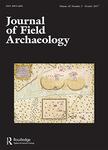版权所有:内蒙古大学图书馆 技术提供:维普资讯• 智图
内蒙古自治区呼和浩特市赛罕区大学西街235号 邮编: 010021

作者机构:Boston Univ Boston MA 02215 USA Univ Penn Philadelphia PA 19104 USA CUNY Grad Ctr New York NY USA Yasar Univ Izmir Turkey
出 版 物:《JOURNAL OF FIELD ARCHAEOLOGY》 (野外考古学杂志)
年 卷 期:2015年第40卷第3期
页 面:325-346页
学科分类:0601[历史学-考古学] 06[历史学] 07[理学] 0712[理学-科学技术史(分学科,可授理学、工学、农学、医学学位)]
基 金:Division Of Behavioral and Cognitive Sci Direct For Social, Behav & Economic Scie Funding Source: National Science Foundation
主 题:digital culture volumetric (3D) recording image-based modeling integrated spatial database management Kaymakci Archaeological Project (Turkey)
摘 要:This article modifies an old archaeological adage-excavation is destruction -to demonstrate how advances in archaeological practice suggest a new iteration: excavation is digitization. Digitization, in a fully digital paradigm, refers to practices that leverage advances in onsite, image-based modeling and volumetric recording, integrated databases, and data sharing. Such practices were implemented in 2014 during the inaugural season of the Kaymakci Archaeological Project (KAP) in western Turkey. The KAP recording system, developed from inception before excavation as a digital workflow, increases accuracy and efficiency as well as simplicity and consistency. The system also encourages both practical and conceptual advances in archaeological practice. These involve benefits associated with thinking volumetrically, rather than in two dimensions, and a connectivity that allows for group decision-making regardless of group location. Additionally, it is hoped that the system s use of almost entirely off-the-shelf solutions will encourage its adoption or at least its imitation by other projects.